‘I’m a Dermatologist and a Mom of 3—Here Are the Methods I Swear By for Soothing Eczema in Babies’
During cold and dry winters, you may notice red, flakey patches of skin on your baby. Even though only one in thirteen adults experiences eczema, one in five babies has it. And while Marisa Garshick, MD, a board-certified dermatologist and mother of three, shares that eczema in babies can be tricky, it is totally manageable.
"My current baby definitely has much more eczema than my other two kids did. They had dry skin but he has visible red patches so we're doing it all," says Dr. Garshick, who practices in New York City. "Even though a baby may not be able to express themselves as much, if they are itchy it can impact sleep, it can impact their overall mood." So getting on top of your baby's eczema is key.
- Marisa Garshick, MD, FAAD, board-certified dermatologist at Medical Dermatology and Cosmetic Surgery in New York
When managing eczema in babies, it's important to know that it can show up in different ways than in adults. "As adults, we tend to see it more in the corners of the arms in front of the elbow, and behind the knees," she says. "Whereas in babies, it can be more widespread—sometimes you can see it in general on the trunk or on the legs, and sometimes it can involve even the scalp or the face."
Here's how to soothe and treat eczema in babies
1. Limit bath time and keep it short
"A lot of people like having baths as part of a baby's bedtime routine, but bathing may not actually be necessary every day," says Dr. Garshick. "So especially if you're potentially prone to eczema, if there's a family history of eczema, or if you're noticing dryness on your baby's skin, reserve bath time for only two or three times a week instead of every day. And make sure to keep the bath time short."
{{post.sponsorText}}
2. Use a gentle cleanser but only where it's needed
"Babies don't necessarily need to be washed with soap all over," says Dr. Garshick. That's because their skin is more sensitive and prone to dryness, and because soap can be drying, in some cases it can exacerbate eczema. "So we always say to limit your cleanser to just the dirty areas, like the underarms, the genital area, the face, the feet, or—of course—[anywhere] they're visibly dirty."
And make sure the soap you are using is gentle. "You want to make sure that the cleanser you're using is not going to be stripping, and that it's not going to have a ton of fragrance in it so that it minimizes any potential irritation or sensitivity," says Dr. Garshick. Her favorites are Baby Dove Hypoallergenic Wash ($10), CeraVe Baby Wash & Shampoo ($16), and Vanicream Gentle Wash for Baby ($9).

This soothing wash is great for the body and hair. It was tested by ophthalmologists, dermatologists, and pediatricians, so you know it’ll be gentle on their skin and okay if it gets in their eyes. Plus, it’s free of dyes, parabens, sulfates, or phthalates to limit potential irritation. It’s made of nutrients that are identical to those naturally found in skin, and includes prebiotics to support a baby’s skin health.

This two-in-one body wash and shampoo has the National Eczema Association Seal of Acceptance, meaning it’s free of potential irritants and eczema triggers. It was developed with pediatric dermatologists and is free of fragrance, parabens, dyes, phthalates, and sulfates. Plus, it’s formulated with three essential ceramides to reinforce babies’ skin barrier, hyaluronic acid to help retain moisture, and vitamin E to soften and soothe skin.
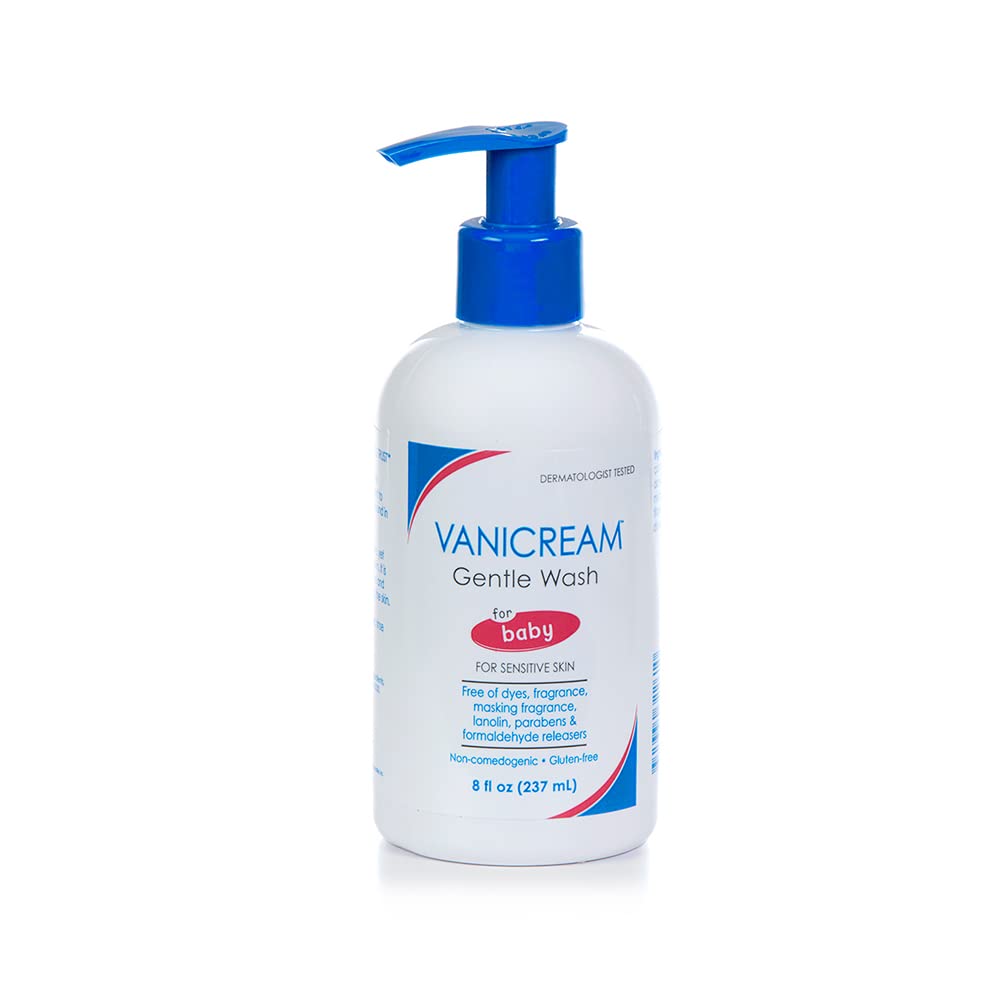
This gluten-free, sulfate-free, and soap-free cleanser is gentle and great for babies and children of all ages. It’s also free of irritants like dyes, fragrances, masking fragrances, lanolin, parabens, and formaldehyde releases. It was also tested by dermatologists to ensure it’s safe for sensitivity-prone skin.
3. Pat dry and immediately apply moisturizer
Once your baby is out of the bath, pat their skin dry. "Don't feel the need to vigorously rub dry," says Dr. Garshick. "Don't feel the need to like vigorously rub dry," says Dr. Garshick. Then, apply a thick layer of moisturizing cream or ointment.
"Usually, babies don't mind having a layer of Vaseline or Aquaphor or something that's a little bit thicker [on their skin], especially if it has dry patches," she says. "There were some studies that showed applying Vaseline to babies' skin within the first several months of life could actually potentially prevent the development of eczema in high-risk babies, acknowledging this idea that just by applying something to the skin barrier helps of support it and strengthen it."
She says to reach for Vaseline Original Healing Jelly ($3), Aquaphor Healing Ointment ($7), CeraVe Moisturizing Cream ($18), or Cetaphil Baby Soothe & Protect Cream ($10).

Made from 100 percent white petrolatum, Vaseline provides a layer of protection to defend against external irritants while also sealing moisture into the skin. Consider it a must-have for dealing with eczema.
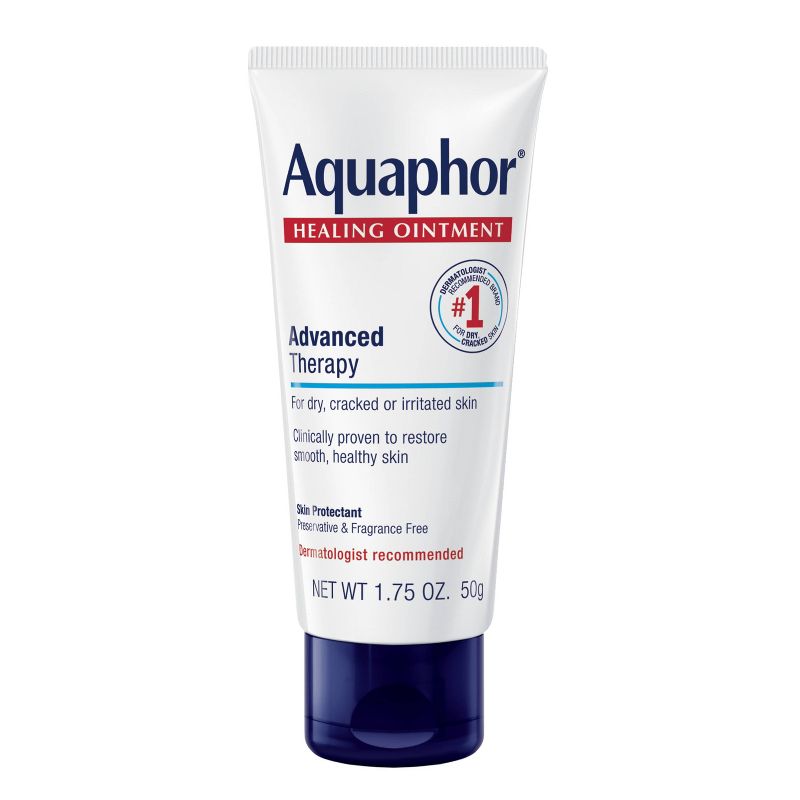
Aquaphor consists of 41 percent petrolatum and a blend of mineral oil, ceresin, lanolin alcohol, panthenol, glycerin, and bisabolol to temporarily protects minor cuts, scrapes, and burns. Plus, it temporarily protects and helps relieve chapped or cracked skin and lips and protects from the drying effects of wind and cold weather.

This derm-developed heavy-duty cream protects the skin’s moisture barrier and is non-comedogenic, non-greasy, and fast-absorbing. Plus, it’s fragrance-free, hypoallergenic, and oil-free. It’s made with hyaluronic acid to retain the skin’s natural moisture, three essential ceramides that help restore the skin barrier, and has a patented delivery system to continually release moisturizing ingredients for 24-hour hydration.

Thanks to allatonin, a derm-beloved skin protectant, this fast-absorbing gel cream helps rescue, prevent, and relieve dry, cracked skin. It’s also formulated with organic calendula and a unique blend of soothing moisturizers to provide relief for babies’ dry, delicate skin.
4. Protect the face and neck
Babies are messy eaters and they tend to drool. Both of these things are adorable, but they aren't exactly great for eczema-prone skin. "A lot of that can cause irritation, especially on the cheeks or in the folds of the neck," says Dr. Garshick. "Be sure to use moisturizing creams and ointments in those areas to lock moisture in but also protect from external irritants getting in."
She always applies a layer of Vaseline to her baby's cheeks and neck before meals. "When we eat, it's a big mess, so putting a layer of ointment on protects the skin from getting the buildup of all the food, which has definitely been helpful."
5. Keep fabrics soft and detergents gentle
When it comes to your baby's clothes and blankets, be sure to stick with soft and breathable fabrics, like cotton, that won't be harsh on their skin. And when you launder their clothes, use detergents that are free of dyes and fragrances like Seventh Generation Free & Clear Laundry Detergent ($13 to $19) and Arm & Hammer Sensitive Liquid Laundry Detergent ($10 to $14).
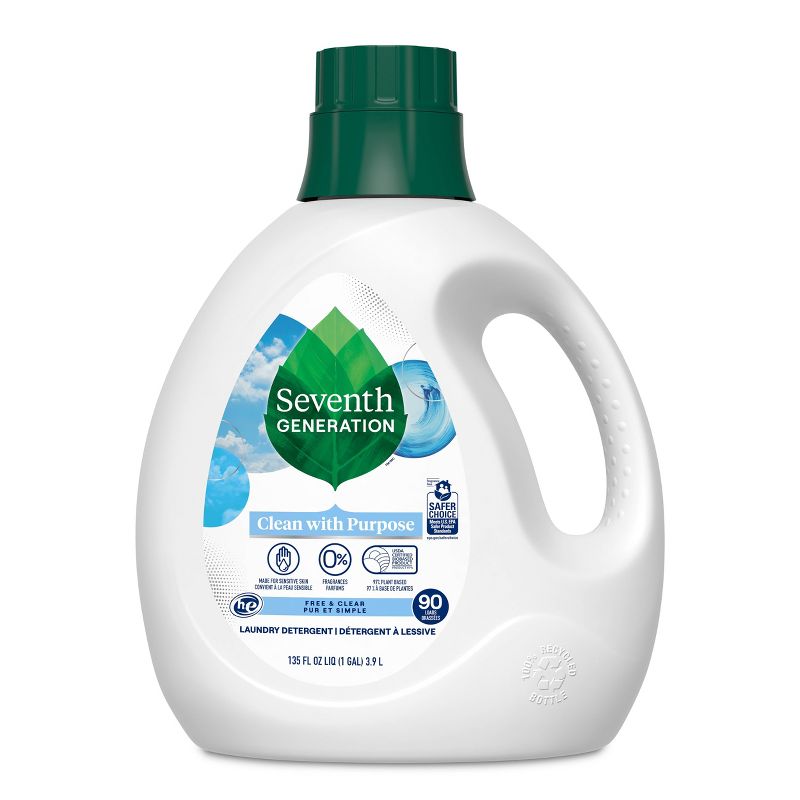
This hypoallergenic liquid laundry detergent was developed with sensitive skin in mind and is free of dyes, fragrances, and artificial brighteners. It’s designed to work in both HE and standard machines, it is powerful in all washing temperatures, and it is septic-safe.
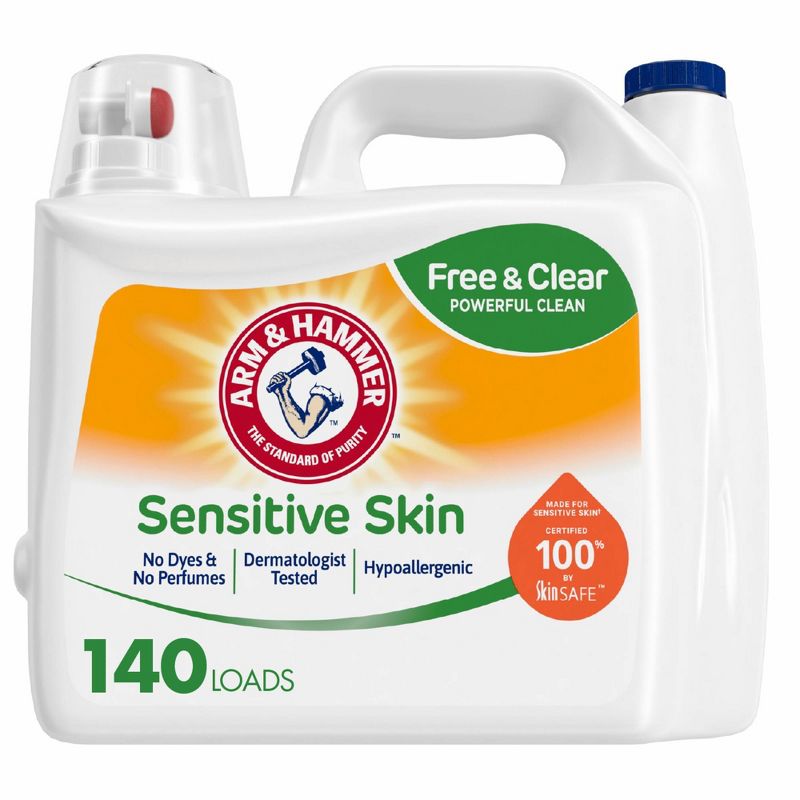
This hypoallergenic, perfume-free, fragrance-free, and dye-free liquid laundry detergent has been reviewed and verified by healthcare professionals, evaluated by dermatologists, and passed four different clinical tests.
6. Keep a humidifier in the nursery
"If you're noticing that your baby is experiencing dry skin, a humidifier can sometimes be helpful in your baby's room for sleeping time," says Dr. Garshick. Just be sure to regularly clean the humidifier so it's free of mold and other buildups. The Canopy Humidifier ($150) is a great option.
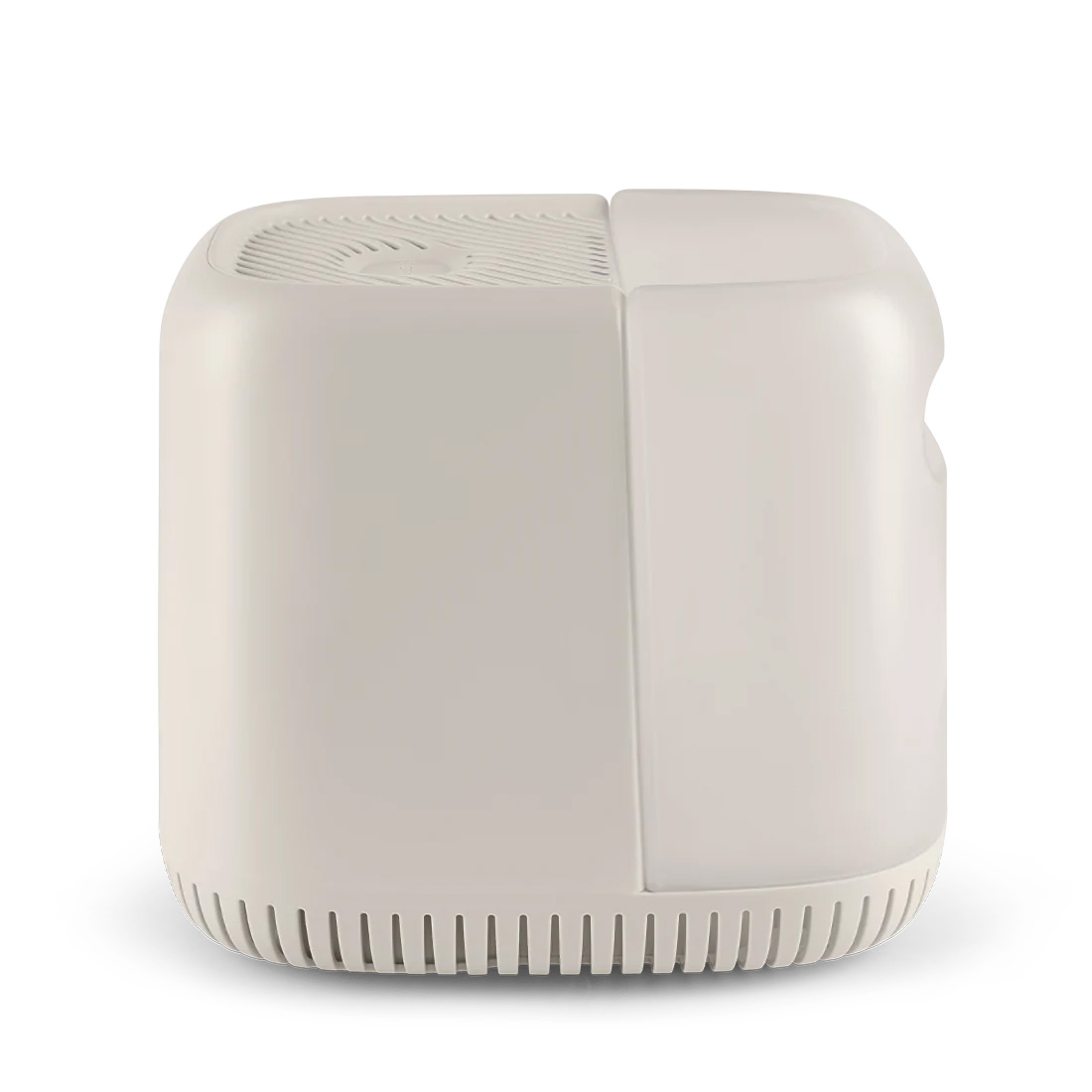
This humidifier is dishwasher safe (and thus easy to clean), has LED lights to kill bacteria, and provides mist-free humidity that doesn’t make the area around the humidifier wet.
7. Consult a dermatologist to learn about your options
"If you do notice any red flaky patches, it is worth checking in with a dermatologist, because sometimes there are prescriptions that can be helpful and that are safe and approved for babies as young as two months or even younger if necessary," she says. "There are lots of different options, including both topical steroids and non-steroidal treatments."
For example, she uses a topical steroid and cortisone cream on her baby. "At some point, the inflammation gets to a point where it's so red and angry-looking that a moisturizer alone may not be enough," she says. "When it's your child, you obviously want to make sure you're making the right decision, [which means] taking into account the potential risk of using medications versus the potential risk of not using medications and just letting the spot potentially brew. Especially as kids get older, when they have a very itchy area and are scratching a lot, it can potentially trigger an infection in the area. In terms of treating skin in children, I do think it's important to remember the value added of treatment."
8. Know that it will likely get better with age
"The percentage of people with eczema is greater in childhood and then it pairs down," says Dr. Garshick. "It can appear within those first six months, but as individuals get older, it oftentimes can go away. One study showed that 80 percent of childhood atopic dermatitis went away after eight years, and less than five percent persisted at 20 years after diagnosis." So do the best that you can to care for your baby's eczema now and know that what you do now (remember those Vaseline studies?) can impact how their eczema progresses throughout their lives.
Want even more beauty intel from our editors? Follow our Fineprint Instagram account for must-know tips and tricks.
Loading More Posts...